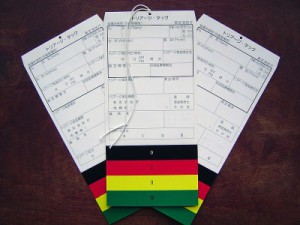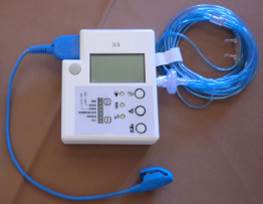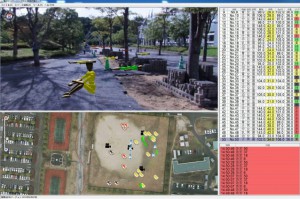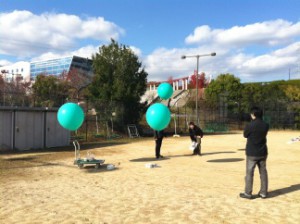Are you curious on what the students were thinking when they first enrolled in NAIST? Also, do you want to know about their thoughts on their current research activities?
Hi, I’m Kiminao Kogiso. I am working in the Intelligent System Control Laboratory as an Assistant Professor. This article presents the concerns of four of our active students in our laboratory. They openly share their experiences and the things that excite them during their stay in NAIST. Hopefully, these personal views will be helpful for the potential students who want to enroll in NAIST.
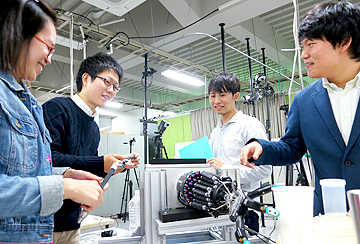
Maricris Cuison Marimon(D3):
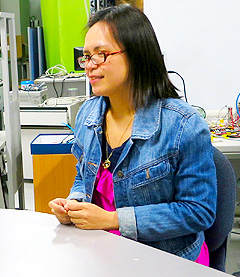
I always have this idea of Japan being a very futuristic country. This country has successfully pioneered in the production and advancement in robots, cars and electronic gadgets. People who want to be leaders in these fields, try to expose themselves by undertaking further studies in Japan. Since this is the current trend and this is what I wanted to do, I decided to pursue my doctorate studies here. I was very fortunate that I was given a golden opportunity to study in NAIST. Indeed, NAIST did not disappoint my high expectations of Japanese universities. NAIST has provided me the knowledge and exposure to be a learning researcher. The faculty are immensely engaging and supportive; and the facilities and environment are highly conducive for students and researchers. Also, the students and researchers are given the autonomy to do their chosen research topics. I think these are the important factors that led NAIST to be a leader in the research arena. I am hoping that my experience and credentials here in NAIST will be able to help me in my career towards the energy and environment industry.
Dasiuke Tanaka (D1):
My student life in NAIST started three years ago. There were two reasons why I selected here as my graduate school. First is that this laboratory is working on the research topic that I am interested in. Second reason is that the college of technology I came from does not have a graduate school. I was looking forward to enter the university but at the same time, I was anxious because my background is slightly different from this laboratory’s research and also, I don’t have many acquaintances in NAIST.
However, my worries didn’t last. I came to realize that everybody was new to the school. Everyone was experiencing the same situation as I was since NAIST doesn’t have an undergraduate school. It gave me the confidence to start making new friends and acquaintances. I think I was blessed to be with my lab mates especially my batchmates. We sometimes became rivals and at the same time, good friends. I am still good friends with them now.

The professors of this laboratory are respectable. I am now studying about an environment recognition scheme based on machine learning methods. Though this research topic is slightly different from the one that I started, I value this change since this research will be a future integration of control theory and machine learning. Since the professors in this laboratory are experts in these fields, I am fortunate and pleased to do research under their supervision.
After graduation, I would like to be involved with this kind of research work. This laboratory has professionals from various fields, therefore, I have a lot of opportunities to learn from them. This will help me to become a great researcher someday.
Yoichiro Masui (M2):
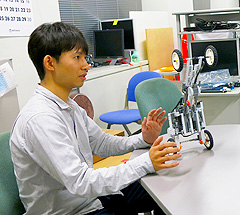
I wanted to study control engineering because I got interested in this topic when I studied it during Technical College. My initial plan before I got into NAIST was to acquire a master’s degree and then, find a job. However, during my master course program, I became more interested in advancing my knowledge in control engineering hence this motivated my decision to enter the doctoral course for control engineering. Currently, I have no immediate plans on what to do after doctoral course, however, it is my desire to become a competent researcher in the field of control engineering in the future. With this, I believe the doctor course program will enhance my knowledge, writing and speaking abilities as a researcher.
Kentaro Urabe (M1):
“NAIST has only graduate schools.” This fact surprised me when I knew it. Originally, I wanted to research a new engineering topic that is different from what I studied in my previous university. Since I have very few friends who knew about NAIST, I attended an off-campus school information session as soon as I knew the session venue. The session gave me an impression that NAIST is difficult to enter since it requires a short essay and an interview and it is highly competitive. However, I successfully passed it and I think I am so lucky!
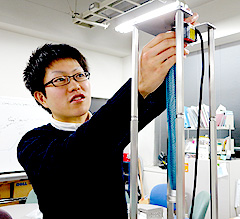
There are lots of things that surprised me when I entered NAIST. First, I saw many people carrying their personal laptop computers. Most of the students check slides on their laptops during classes and some read papers outdoors. Next, atmosphere of NAIST is unique because it is a small and compact campus. At first, I felt that the atmosphere was tasteless because I thought a prestigious university should be prosperous and lively. Now, I feel it is better because NAIST is a good environment for me to tackle research activities. There are many international students in the campus hence I have a lot of opportunities to talk to them in English. Also, there seem to be many students who are studying and researching very hard and their enthusiastic attitude towards studying are shared with other students, which is why I choose here to study and research.
I am really happy to be able to join the research activities in NAIST. I want to contribute to the society by applying the knowledge I gained here in NAIST. Even if I begin my work career in a different area, I believe that what I have experienced here in NAIST will be useful and helpful to me in the future.
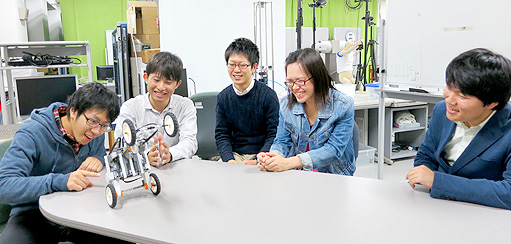
We are looking forward to seeing you and to researching with you in NAIST. Thanks!







